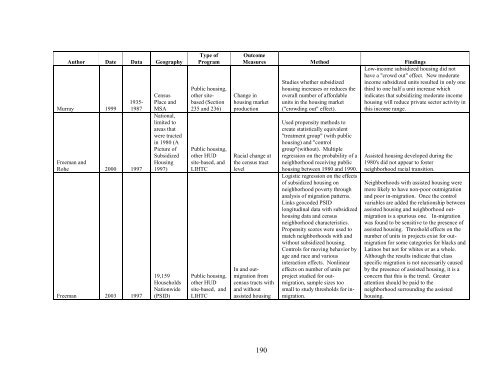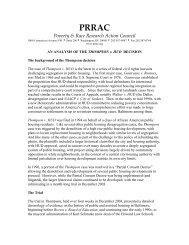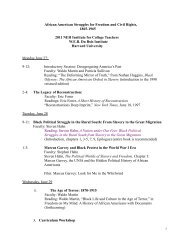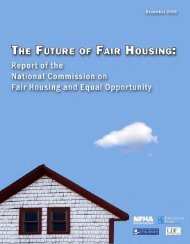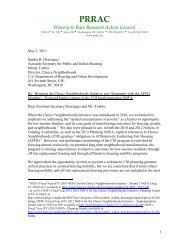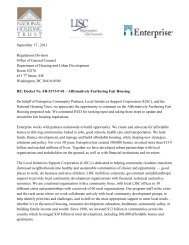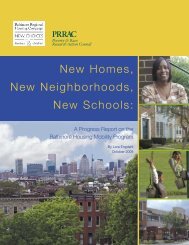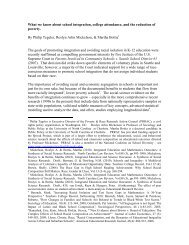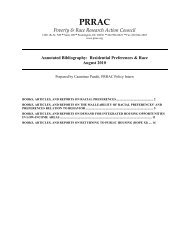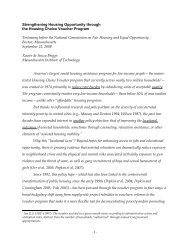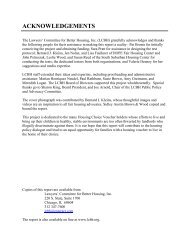The Spatial Concentration of Subsidized Housing - Poverty & Race ...
The Spatial Concentration of Subsidized Housing - Poverty & Race ...
The Spatial Concentration of Subsidized Housing - Poverty & Race ...
Create successful ePaper yourself
Turn your PDF publications into a flip-book with our unique Google optimized e-Paper software.
Author Date Data GeographyMurray 19991935-1987Freeman andRohe 2000 1997Freeman 2003 1997CensusPlace andMSANational,limited toareas thatwere tractedin 1980 (APicture <strong>of</strong><strong>Subsidized</strong><strong>Housing</strong>1997)19,159HouseholdsNationwide(PSID)Type <strong>of</strong>ProgramPublic housing,other sitebased(Section235 and 236)Public housing,other HUDsite-based, andLIHTCPublic housing,other HUDsite-based, andLIHTCOutcomeMeasures Method FindingsChange inhousing marketproductionRacial change atthe census tractlevelIn and outmigrationfromcensus tracts withand withoutassisted housingStudies whether subsidizedhousing increases or reduces theoverall number <strong>of</strong> affordableunits in the housing market("crowding out" effect).Used propensity methods tocreate statistically equivalent"treatment group" (with publichousing) and "controlgroup"(without). Multipleregression on the probability <strong>of</strong> aneighborhood receiving publichousing between 1980 and 1990.Logistic regression on the effects<strong>of</strong> subsidized housing onneighborhood poverty throughanalysis <strong>of</strong> migration patterns.Links geocoded PSIDlongitudinal data with subsidizedhousing data and censusneighborhood characteristics.Propensity scores were used tomatch neighborhoods with andwithout subsidized housing.Controls for moving behavior byage and race and variousinteraction effects. Nonlineareffects on number <strong>of</strong> units perproject studied for outmigration,sample sizes toosmall to study thresholds for inmigration.Low-income subsidized housing did nothave a "crowd out" effect. New moderateincome subsidized units resulted in only onethird to one half a unit increase whichindicates that subsidizing moderate incomehousing will reduce private sector activity inthis income range.Assisted housing developed during the1980's did not appear to fosterneighborhood racial transition.Neighborhoods with assisted housing weremore likely to have non-poor outmigrationand poor in-migration. Once the controlvariables are added the relationship betweenassisted housing and neighborhood outmigrationis a spurious one. In-migrationwas found to be sensitive to the presence <strong>of</strong>assisted housing. Threshold effects on thenumber <strong>of</strong> units in projects exist for outmigrationfor some categories for blacks andLatinos but not for whites or as a whole.Although the results indicate that classspecific migration is not necessarily causedby the presence <strong>of</strong> assisted housing, it is aconcern that this is the trend. Greaterattention should be paid to theneighborhood surrounding the assistedhousing.190


